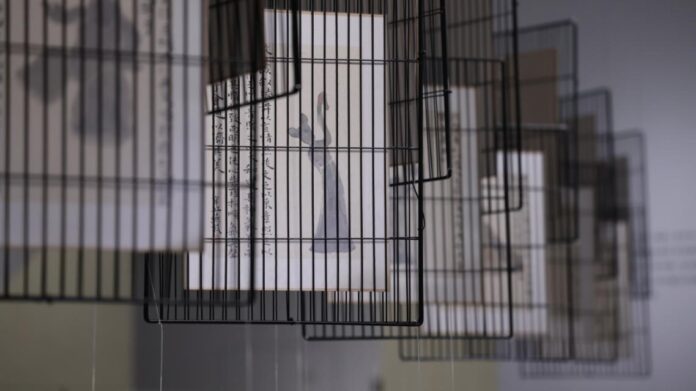
From tradition to actuality, Zhang Yanzi
Ink and wash painting, also known as “Chinese painting”, has a history of nearly two thousand years in China, and is also regarded as the shining crystallization of traditional Chinese art as well as a core symbol of Chinese culture. In 1978 when the reform and opening up was started in China, various forms of Western art rushed into China, and some artists who had engaged in traditional ink and wash painting began to expand the ink language, which was later called “New Ink Art Movement.”
While inspiring the wonderful inner charm of this ancient Eastern art, it has also allowed this art form to appear in major international art exhibitions and has been widely recognized. As a contemporary ink artist, Zhang Yanzi has been widely acclaimed for her exquisite ink painting skills, bold use of new materials, and the combination of traditional Chinese culture and contemporary art materials in her works. Through her influential solo exhibitions, she confronts the reality of current society with her unique way of thinking, her sharp and witty artistic language creates for the observer forward-looking and thought-provoking artworks, which enables her to become a unique presence in the current environment.
The never ending transformation
During the creative career of Zhang Yanzi, there have been two important transformations: The Remedy (2013), Zhang’s solo exhibition at Today Art Museum made her renowned overnight, which also initiated her individual artistic language of “healing” and “stinging”.
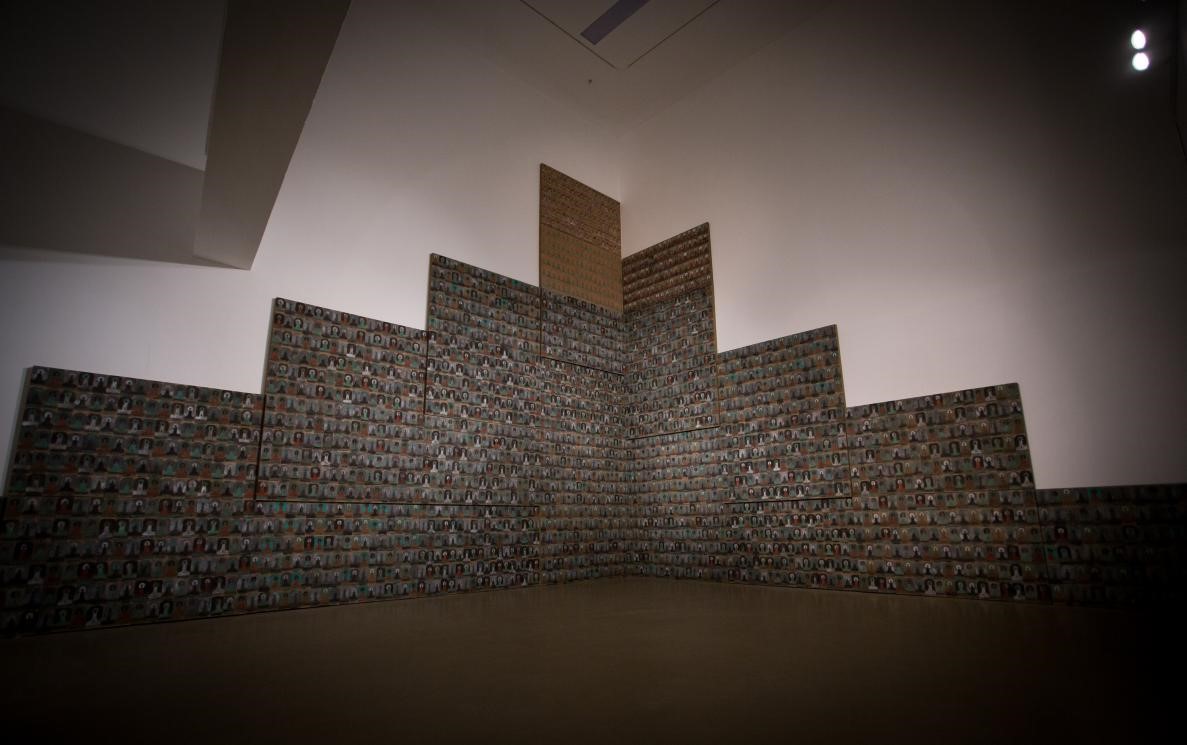
As early as her postgraduate years, Zhang Yanzi was seen as a rebellious student, she did not want to be a replicate, what she thought about was the question: “In addition to preserving the tradition, how to innovate?” Many ink artists paint everything from the ancient period over and over again, as if they were born in the ancient times, but Zhang Yanzi believes that if only by imitation, creating according to a popular model, then everything is false, it is a disguised art.
Therefore, she finds themes with real emotions in the subject matter, excavates the authentic reasons behind the appearance, and the philosophical thinking that arises from them. In terms of methods, she explores a variety of possibilities, including grinding ink, special pigments, paper quality, etc. It breaks through the boundaries of formal language and has an openness without any taboos. At this stage, capsules, stethoscopes, and painkillers in Western medicine have become the objects and carriers of her depiction. Because of her ingenuity which is difficult to ignore, her new ink paintings such as “Qi (Flow of Energy)” and “The Remedy” that combine Eastern cultural heritage and contemporary art charm allow her name to be recognized by many spectators.
The mind “healer” Zhang Yanzi
The themes of “pain” and “pain relief” have become a label in Zhang Yanzi’s work. Beidao, a renowned contemporary poet in China has compared Zhang Yanzi to a mind “healer” as “her paintings strike a subtle balance between art and healing. She finds the source of self-salvation of mankind with unique sensitivity of feminine presence.” “Pain” as a dual feeling for both body and mind may come from the artist’s individual life experience. At her solo exhibition at Volta 2017 in New York, there were gauze, painkillers, hospital bed, traditional Chinese medicine… These seemingly light things, which carry the unavoidable pain of life, have the colors of compassion, recovery and healing in Zhang Yanzi’s series of masterpieces, as art critic Barbara Pollack commented, “She successfully transformed the most mundane details of the medical process into artworks.”
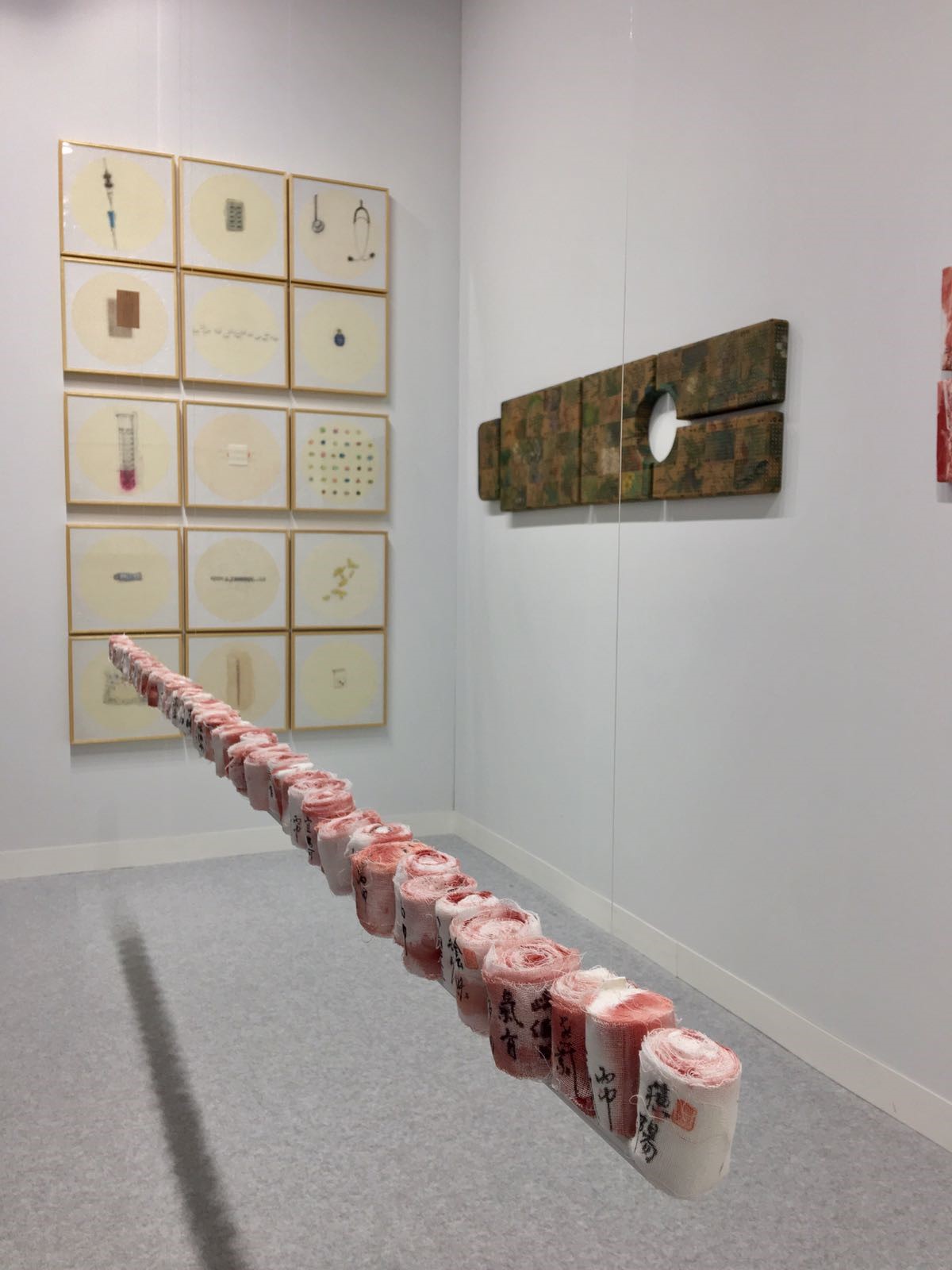
The audience offers a strong emotional feedback on these works that seem to contain infinite tenderness, which also gives Zhang Yanzi a deeper thinking about the redemption function that artistic creation can reach, “Frankly speaking, in the beginning, I only focused on myself, my happiness, my pain, my body, my spirit… But when I spoke to some of the audience, I was deeply moved, I saw their tears, I couldn’t believe I had the ability to move people, I believed it came from a mysterious place, I started thinking about more people rather than myself. ”
New York and her new artistic evolution stage
At the end of 2019, Zhang Yanzi went to New York, and she did not expect that her creation to be shifted to another stage. The theme of “healing” with warm compassion in the past has come to an abrupt end, and it was replaced by a more complex mixture of emotions – fear, anxiety, sadness, helplessness and even anger… Confronted with the pandemic of COVID-19 that has swept the world, the four series of works “Painted Skin”, “Mask Diary”, “The Edge of the World at Close Quarters”, “Carpe diem”” and “The Collective Spirit” have become Zhang Yanzi’s stress response to world turmoil from an individual experience and thinking about the survival philosophy of Chinese people with a more powerful and distinctive appearance. In this latest phase, “healing” quietly retreats behind complex emotions, but it does not mean that it has disappeared completely.
From the lockdown of New York in March and April 2020, through to her return to China in March 2021 and being quarantined for 14 days in Shanghai, further to May 2022, she experienced the quarantine life in Beijing again. The intermittent life of isolation for her is highly intertwined with her creative periods over the last three years.
New deep inspiration issues
Before 2019, Zhang Yanzi traveled frequently to many countries, but she never really thought about issues like “identity and race”, “refugees and flight”. During the pandemic, Trump’s remarks made Zhang Yanzi suddenly realize that her identity may be that of an outlier, and the sudden changed environment inspired her, “Watching the BLM parade every day, facing the rise of the pandemic data, the news of the turmoil and great changes in international relations, my thoughts and emotions were sometimes depressed, sometimes exciting, which forced me to start thinking about respect and discrimination, correctness and incorrectness, identity and belonging in the midst of uneasiness and conflicts, and I explore the inner meaning of being a life after being stripped off the appearance and color on the surface.”
Thinking about social issues such as identity and race were officially included in Zhang Yanzi’s creation. The name of the work “Painted Skin” comes from a classic story in classical Chinese literature “Liaozhai Zhiyi (Strange Tales from Chinese Studio)”, the painting uses the traditional long scroll system of Chinese painting to symbolize the faces of different emotions such as fear, disguise, absurdity, freedom, and carnival, which come from different cultural roots, and with the special viewing method of the long scroll that constantly moves from the point of view, the face/identity transformations occur one after another.
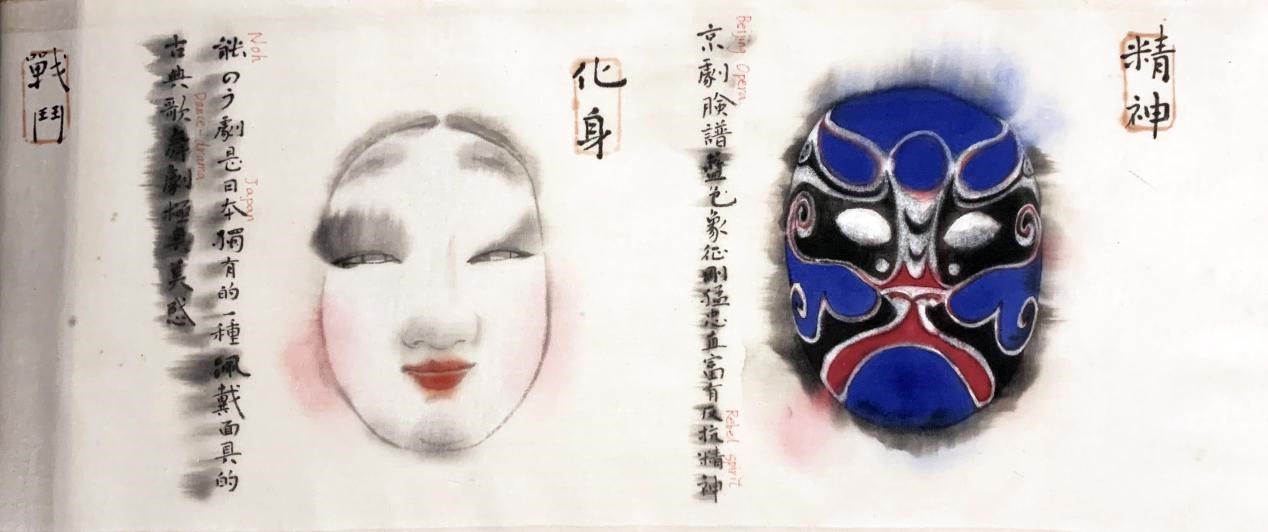
The pandemic and the global transformations
Similar discussions about obscurity and invisibility are also reflected in the “Mask Dairy” series. Due to the shortage of medical resources, hand-sewn masks became Zhang Yanzi’s daily labor to kill time during isolation. And the daily updating news from both the United States and China makes the world become a black comedy that is constantly rotating. In order to resist the possible forgetting in the future, Zhang Yanzi began to record the data, stories and emotions of the day in the form of paintings and words on the mask she made by herself.
Masks, hybrid faces, security, equality, Zhang Yanzi new questions
This creative process began on January 23, 2020, making one mask per day until May 4, a total of 111 masks were completed and were awarded the status of artworks, which can neither be abandoned nor forgotten. Masks here are not seen as medical tools used to block the virus, but a symbol of protection, identity, disguise, escape and even change, through the work, the artist inquires about herself and the world: “Does everyone need a mask?” And “If everyone became a chameleon and had a hybrid face, would it be possible to achieve true security and equality?”
During this period, the artist also created the series “The Edge of the World at Close Quarters”. In the era of the Internet and screens, people watch and judge personal experiences as the pandemic develops, almost everyone observed the real-time global pandemic distribution map through mobile phones, and when the huge map of the earth is condensed in the palm of the hand, just like the Creator looking at the small human world with a macroscopic vision.
Big or small
The transformation of scale, the confrontation between the grand and the small, is the starting point of the discussion on “The Edge of the World at Close Quarters”. In this work, 33 centimeters is “one chi (unit of length)” in the traditional Chinese scale standard, with the size of one chi, implicitly opposing people’s established cognition of the world. It is true that the digital age has changed the scale by which people see things, but in the face of natural disasters, is the earth, culture and even human beings big or small?
Back to China
In March 2021, Zhang Yanzi returned to China and began her 14-day quarantine in Shanghai. During the quarantine period, she created the “Carpe diem” series, which used a humorous language to express a kind of immersive self-deception and a psychological experience with a sense of cultural experience. Aren’t the Chinese pottery figurines at the Metropolitan Museum in New York in isolation? But they did not stop dancing!
This led the artist to reflect on Chinese philosophy and way of survival. No matter how incredible the situation is, some people choose to resist and break free, and some people instead enjoy the protection of the iron cage, this self-consolation and paralysis tendency that exists in the depth of human nature, which can be seen in the entertainment videos that spread virally on the Internet. As they created a negative optimism, and also make the ancient pottery figurines that are isolated in the iron cages and still happily dancing have a critically social aspect in her creation.
Zhang Yanzi, from rebellion to innovation
From her rebellion against the conservatism in Chinese painting, to the innovation of ink language, further to the confrontation of social issues, it seems that Zhang Yanzi’s reflection and innovation on traditional Chinese ink expression has developed into a deeper stage, “The Chinese paintings that people are accustomed to seeing, those plum blossoms, bamboo, landscapes, often contain an escapist mentality, traditional Chinese painting pays attention to ‘be hidden from the world’, always in the pursuit of Tao Yuanming’s wonderland of ‘peach blossom’, which is of course a very high realm.” But for Zhang Yanzi, in her latest creative stage since 2019, she is more concerned about how to make her art expression more profound and thought-provoking by paying attention to the world around her.
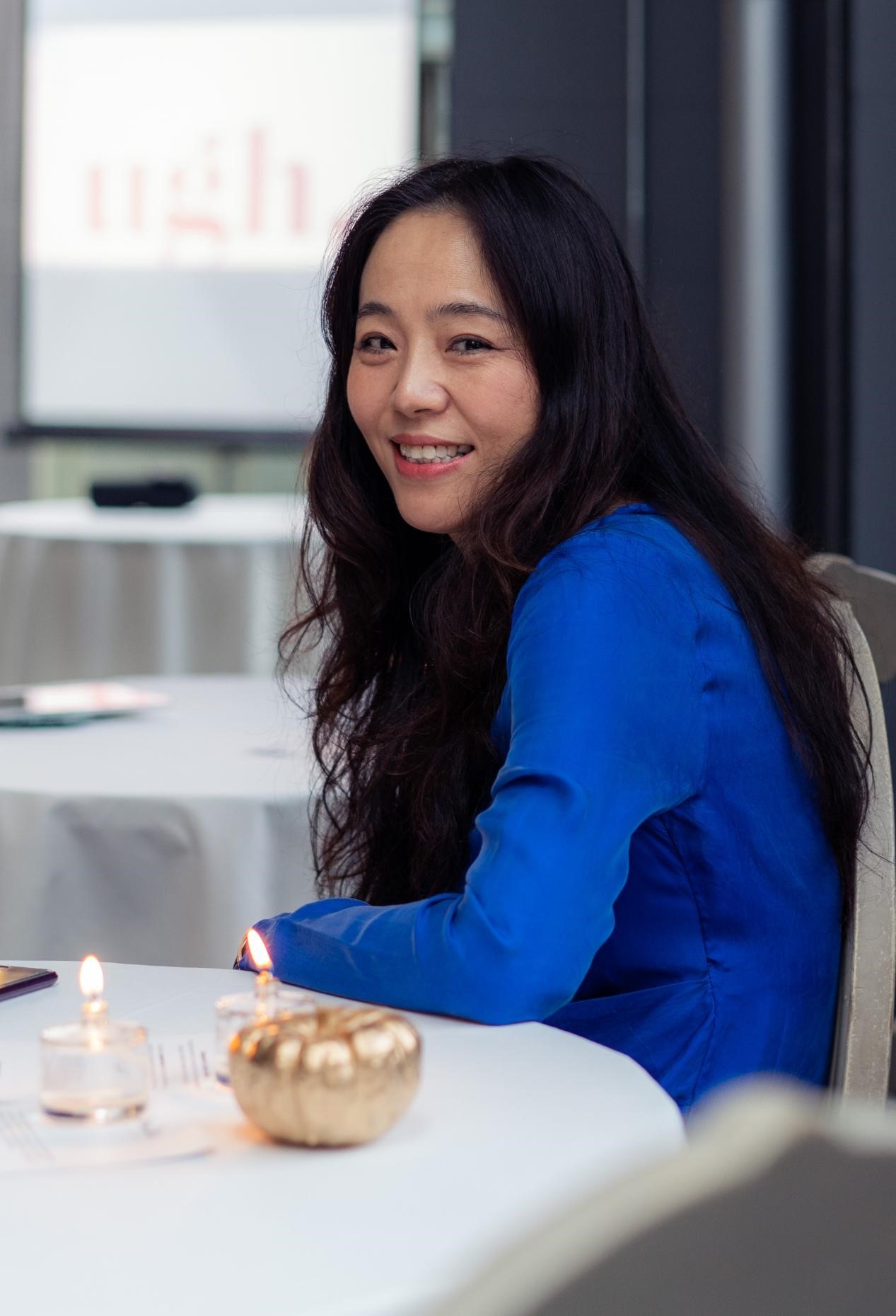 ZHANG YANZI . Was born in Zhenjiang, Jiangsu Province. Graduated from the Central Academy of Fine Arts, Zhang Yanzi got her MFAs in both Chinese Painting and Literature. She is currently based in Beijing and she works as a Professor and PhD supervisor in Central Academy of Fine Arts. Her solo exhibitions were held respectively at Shanghai Art Museum, Today Art Museum, PAN, Palazzo delle Arti di Napoli, Hong Kong Museum of Medical Sciences, Surgeons’ Hall Museums and Museum of East Asian Art (MEAA). Besides, her works have been included in the collections of the National Art Museum of China, M+ Museum, CAFA Art Museum, Musée Atelier Audemars Piguet and private collections.
ZHANG YANZI . Was born in Zhenjiang, Jiangsu Province. Graduated from the Central Academy of Fine Arts, Zhang Yanzi got her MFAs in both Chinese Painting and Literature. She is currently based in Beijing and she works as a Professor and PhD supervisor in Central Academy of Fine Arts. Her solo exhibitions were held respectively at Shanghai Art Museum, Today Art Museum, PAN, Palazzo delle Arti di Napoli, Hong Kong Museum of Medical Sciences, Surgeons’ Hall Museums and Museum of East Asian Art (MEAA). Besides, her works have been included in the collections of the National Art Museum of China, M+ Museum, CAFA Art Museum, Musée Atelier Audemars Piguet and private collections.
You can also read: Dong Shubing and his work Children of the Earth







